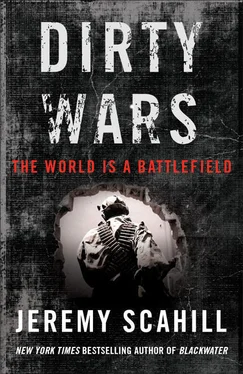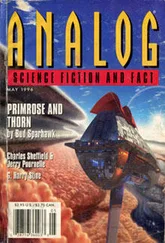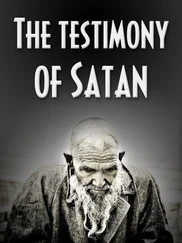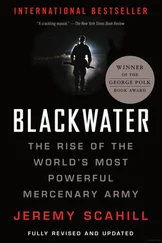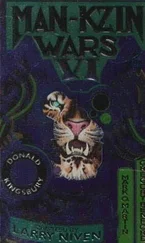Any country, friend or foe of the United States, would be fair game for operations. The CIA, the US ambassadors and the home government would not be looped in. Early planning memos by Rumsfeld indicated that he wanted the SSB to focus intelligence-gathering operations on “emerging target countries such as Somalia, Yemen, Indonesia, Philippines and Georgia.” SSB was designed to “operate without detection and under the defense secretary’s direct control.” The Washington Post obtained internal Pentagon documents that called for a HUMINT branch that would be “directly responsive to tasking from SecDef.” These SSB units would operate under “nonofficial cover,” at times using false names and nationalities with the goal of covering the “full spectrum of humint operations.” It was a direct challenge to the CIA, whose Directorate of Operations was the traditional agency tasked with covert missions, particularly when conducted in “friendly” nations or countries where “conventional war is a distant or unlikely prospect.” There was pro forma language in the internal guidelines on the SSB defining “coordination” as giving the Agency seventy-two hours’ notice before launching an intelligence-gathering mission, but the SSB was intended to radically streamline the pace and scope of lethal covert military operations against terrorist suspects, regardless of where they resided.
“Definitely Cheney, and also Rumsfeld to a lesser extent, viewed the CIA as a weak sister, and that basically they were not politically reliable,” recalled Philip Giraldi, the career CIA case officer. “And, essentially, it was decided that we would go the JSOC route. But of course, the JSOC route has problems. When you use the military as your cutting edge on some of these activities where you’re not at war with somebody, where you’re getting involved with sending people into someone else’s sovereign territory, then you’re opening up all kinds of cans of worms that intelligence agencies were created to avoid.” Covert actions permit US operatives to ignore international conventions and to violate other nations’ domestic laws. US military operations, however, are required by US law to observe international laws, the laws of war and the Geneva Conventions, though the Bush administration clearly did not see it that way when it came to the status of certain military detainees. Using US Special Ops Forces for covert actions could mean they lose their Geneva Convention status, be accused of spying and ultimately be labeled “unlawful combatants.” Critics worried that this would place US armed service members at risk should they be captured, with their captors enabled to ignore the Geneva Conventions’ prohibitions on torture and inhumane treatment, citing the US precedent.
Although the SSB was officially run by Vice Admiral Lowell Jacoby, the head of the Defense Intelligence Agency, its real taskmaster was Stephen Cambone, a political ideologue recruited by Rumsfeld. A leading neocon, Cambone had first appeared on the Pentagon radar when he ran the Strategic Defense Initiative in 1990. Later, he worked on special projects for Rumsfeld on DoD commissions dealing with missile defense and spacebased weapons. Bringing Cambone on board to help shape the hunter-killer Special Ops program that had been on Rumsfeld’s mind since 9/11 opened the floodgates. Officially, Cambone was Rumsfeld’s special assistant. In reality, he was Rumsfeld’s point man on developing the DoD’s version of the “dark side.”
When, after 9/11, Rumsfeld sought to wrest control of the Global War on Terror from the CIA, he went to Cambone. In one of his famous “snowflake” memos, on September 23, 2001, Rumsfeld told his staff: “We want to think through designating Special Ops as the global terrorism CINC [commander in chief]. They’ve got a joint intelligence center. The effort has to be global.” That day, Rumsfeld sent Cambone a note, subject: “Capabilities,” asking him to look into “how we can develop additional unconventional capabilities in the Pentagon and troops, like Special Ops, only of a different type. We need greater flexibility and versatility.” Three days later, on the morning of September 26, 2001, Rumsfeld sent Cambone another memo with the subject: “Opportunity.” “Now is the time to fix intel,” Rumsfeld wrote, saying that he wanted to remap the command structure of US forces across the globe, “to reorganize our forces in Europe and Asia, to accelerate Army transformation, to reduce headquarters and to get homeland defense humming. There may be other things we could do as well.”
Cambone would become a powerful shadow player with access to Rumsfeld and his team. One of his primary jobs would be organizing Special Operations activities aimed at killing and capturing people designated as terrorists or enemies by Rumsfeld and the White House. “They are all cast in the same mode, which is ‘let’s get the most high-tech gadgets for communications and weapons, let’s run these operations at the highest possible level of efficiency, let’s get some really good intelligence, so we can pick out individuals, and we’ll go kill them,’” said Colonel Lang. Rumsfeld had told Cambone, “We need to increase the total number of Special Forces.” In 2002, Cambone began reviewing ways to free up as many shooters as possible. This began with transferring some of the traditional tasks performed by SOFs to the conventional military, such as: training foreign forces, conducting airlift missions and serving as a Quick Reaction Force (QRF) for VIPs in Afghanistan. Rumsfeld and Cambone wanted all SOF hands on deck for kill/capture. Leave the rest to big army.
In mid-2002, Rumsfeld issued a classified planning order to General Richard Myers, the chair of the Joint Chiefs, advocating a sweeping change in the way JSOC and other Special Ops would operate. Rumsfeld wanted “preliminary pre-clearance” for operations and maximum authority for commanders on the ground to execute missions.
Rumsfeld’s goal was to reorganize the structure of US Special Operations Forces, blowing up barriers to allow for fast, lethal, global operations with no bureaucratic meddling from anyone who did not have a need to know. The Special Mission Units (SMUs) of JSOC, Delta Force, which was officially known as CAG, or Combat Applications Group, and SEAL Team 6, were attractive to Rumsfeld because they were accustomed to operating autonomously, even in the old days of regional commands being responsible for all troops operating in their Area of Responsibility. These SMUs formed the National Missions Force and were permitted to operate discreetly and globally without coordinating with the conventional command authorities. Rumsfeld wanted to make this model apply to all Special Ops Forces.
“Today we’re taking a number of steps to strengthen the U.S. Special Operations Command so it can make even greater contributions to the global war on terrorism,” Rumsfeld declared. “Since 1987 the Special Operations Command has been organized as a supporting command, meaning it provides warriors and materiel to the various regional combatant commanders, who then plan and direct missions.” No more. From now on, Rumsfeld asserted, SOCOM would be its own boss—with a headquarters in Tampa, Florida, and regional “Theater Special Operations Commands” that could organize hits and other direct actions on a rolling basis. Rumsfeld said this was necessary because of “the nature of the enemy and the need for fast, efficient operations in hunting down and rooting out terrorist networks around the world.”
In 2003, Rumsfeld created a new portfolio for Cambone, one that had never existed in the Pentagon’s civilian bureaucracy before, undersecretary of defense for intelligence. The new position was referred to internally as “defense intelligence czar”—and it came with unprecedented authority, as it forced all of the previously independent intelligence entities of the Pentagon to report directly to Cambone. This included the Defense Intelligence Agency and the National Security Agency. Steven Aftergood of the Federation of American Scientists charged that the position was part of a drive “to shift the intelligence community’s center of gravity further into the Pentagon.” What this meant in real terms was that 85 percent of the nation’s total intelligence budget would be under Cambone’s control, with the CIA director controlling just 12 percent. “Rumsfeld wasn’t an evil man” a former aide to a Special Operations commander told me. “Rumsfeld had vision. He allowed people like Cambone to manipulate shit.” Conventional uniformed military leaders reportedly despised Cambone, with one senior army officer quipping early in Cambone’s tenure, “If I had one round left in my revolver, I’d take out Stephen Cambone.”
Читать дальше
